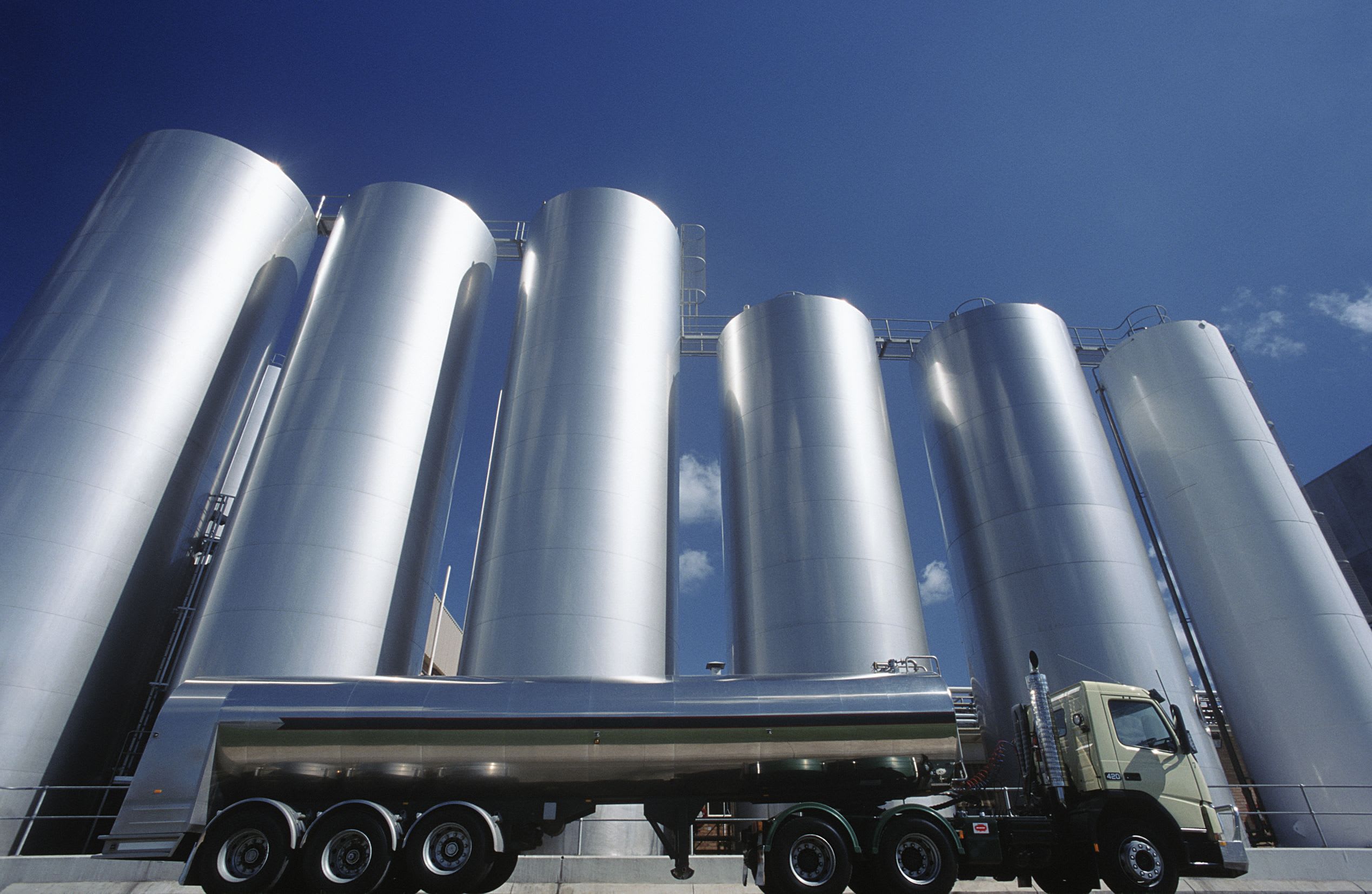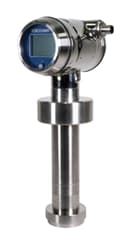Accurate Inventory Measurement in Receiving Tanks
Plant Name: Upper Midwest Dairy
Industry: Food and Beverage
Product(s): Milk and other dairy products
Application
The safe, consistent, and reliable operation of a dairy facility begins at the receiving tanks. Since space is at a premium, efficiency is a must. Most of the insulated storage tanks that receive and chill the raw milk are narrow to conserve footprint and their heights vary with capacity requirements.
Facilities commonly track the level of milk in each tank with hydrostatic pressure measurements taken by hygienic and sanitary pressure transmitters. Typically placed at the lowest point on the tank’s exterior, the transmitter must accurately and reliably measure the level of the milk in the tank to aid inventory and production planning. The neck of the transmitter penetrates the tank insulation and must provide a flush surface to the tank’s interior wall.

Figure 1. Insulated storage tanks
Challenges
Tank level measurements must be simple and accurate in order to:
- Maintain the milk quality
- Reduce waste
- Clean-up costs
- Enable facility profitability
Achieving these goals can be difficult because accurate tank level measurements depend on pressure measurements which are themselves affected by swings in ambient or process temperatures. In addition, the distance between the transmitter’s sensor and the diaphragm at the process connection can hinder reliable and responsive measurements.
Each silo requires a pressure transmitter that provides the appropriate turndown ratio for its height. If each silo is a different height, the facility might need to stock and maintain multiple pressure transmitters — and reducing efficient facility operations.
Solution
To address issues with inventory expenses and purchasing complexity, customers choose Yokogawa’s 3-A certified EJA565E Pressure and Level Transmitter with its 10:1 turndown ratio for accurate measurements in a variety of silo heights and environments. In addition, as teams install the EJA565E transmitter, they reduce stocking issues because the transmitter offers a wide variety of sanitary process connections and can be directly installed to existing connection points at the tank.

Figure 2. EJA565E transmitter
During setup, users can rapidly zero the transmitter and establish the 100% range values with the transmitter’s backlit display and push button interface.
Regardless of wide ambient temperature swings in day-to-day operation, the EJA565E transmitter obtains accurate and reliable measurements because it is enhanced with active temperature compensation that senses process temperatures and is less susceptible to ambient temperature changes.
Key Advantages
- Exceptional accuracy and a 10:1 turndown range enable standardization on one model, simplifying ERP systems and reducing equipment inventory.
- Active temperature compensation provides robust and stable level measurements for improved inventory control, product quality, and safety.
- Comprehensive selection of sanitary process connections simplify installation, maintenance, and stocking.

Figure 3. EJA565E features
Industries
-
Food & Beverage
The food and beverage industry must produce safe, high-quality foods and beverages for consumers. In addition to quality control, the manufacturing processes include many challenges such as managing ingredients, improving efficiency and handling global environmental issues. Yokogawa leverages its decades of technological expertise to help customers build and operate the ideal factory.
Have Questions?
Contact a Yokogawa Expert to learn how we can help you solve your challenges.